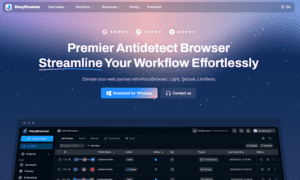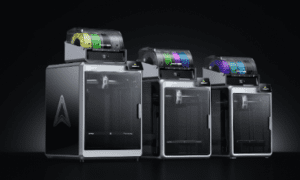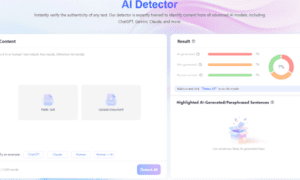Introduction: More Than Just Payments
Plenty of fintech tools start with a narrow use case—check printing, ACH transfers, invoice generation—and stay there. But Sabeer Nelli had a broader vision for Zil Money: one where financial tools didn’t live in silos, but functioned as a unified control center for business money movement.
What began as a solution to the pain of issuing business checks has become a platform that now handles payroll, wires, global transfers, vendor management, account provisioning, and more. Not by pivoting. Not by chasing investor hype. But by listening to the way real businesses run—and building upward from there.
Today, Zil Money is no longer just a payment tool. It’s a financial operating system for small and mid-sized businesses that don’t want 10 apps—they want one that works.
Starting with One Pain Point: Business Checks
Zil Money began by solving one specific, frustrating problem: printing business checks.
Traditional check issuance was expensive, slow, and inflexible:
- You had to order pre-printed stock
- You needed proprietary software
- Making a correction meant days of delay
- Cancelling a check required a call to the bank
Nelli knew this pain firsthand from his experience running Tyler Petroleum. So he created a browser-based tool that let businesses print professional checks from any printer—no special equipment, no learning curve.
That tool spread quickly. Why? Because it reduced friction in something millions of businesses do every week.
Listening to the Next Set of Problems
Once Zil Money was in use for check printing, a natural next question arose from users:
“Can I also send ACH payments from here?”
Then:
“Can I wire funds to suppliers?”
And then:
“What if I want to run payroll, track vendors, or schedule recurring payments?”
Each of these requests was rooted in the same theme: users didn’t want more apps. They wanted more capability in the system they already trusted.
Rather than build a new product or launch a spin-off, Nelli did something different—he expanded Zil Money’s architecture to support these needs natively, from the same login.
The Result: One Platform, Many Functions
Today, Zil Money includes:
- Check printing and mailing(on-demand, or automated)
- ACH and wire transfers, both domestic and global
- Recurring payments and batch transfers
- Payroll toolsthat support multiple payment methods
- Business checking account setupvia US
- Vendor and client management
- Full audit trails and user permission controls
Every function is tied to real operational tasks—not fintech buzzwords.
And the experience isn’t cobbled together. It’s unified, clean, and familiar to the user from day one.
One Login, Zero Silos
The magic of Zil Money’s evolution lies in what it prevents as much as what it provides.
Without it, a business might be forced to juggle:
- A check-printing tool
- A separate ACH provider
- Their bank’s interface for wires
- A third-party payroll app
- A clunky vendor database
- Accounting software that only half-integrates with the rest
Each of these creates risk, delays, and friction.
With Zil Money, those actions happen under one roof. Data flows between functions. Payments and account management are no longer disjointed. And the user stays focused—not confused.
Growth Without the Bloat
Many platforms expand by cramming in features. Zil Money expands by adding capabilities—only when they serve real, daily needs.
That’s why the platform still feels intuitive, even as it becomes more powerful:
- Each new feature gets folded into existing workflows
- Every function is discoverable, not hidden
- The interface adapts to the user’s role—admin, bookkeeper, manager
- Nothing is added unless it simplifies a real task
Sabeer Nelli’s guiding principle: If it doesn’t reduce friction, it doesn’t belong in the product.
Use Case: Full-Stack Simplicity in the Field
A mid-sized trucking company recently transitioned its entire financial workflow into Zil Money. Before:
- Checks were managed in QuickBooks
- Wires were handled by the bank
- Payroll ran through a third-party processor
- Vendor records were tracked manually in spreadsheets
After switching:
- All payments now flow through Zil Money
- The company uses USto open business checking accounts for each division
- Payroll is handled through the same system
- Financial data is export-ready for accounting
- The CFO no longer has to log into four different systems daily
The impact? Hours saved per week, fewer errors, and one system that actually supports how the business runs.
From Feature to Foundation
Zil Money didn’t set out to “be a platform.” It became one because businesses needed it to be.
This organic growth model gives it two huge advantages over all-in-one tools built top-down:
- Every feature is use-tested before it’s scaled
- The product evolves based on usage—not guesses
In Nelli’s words:
“We didn’t plan for scale. We just planned to help the customer do more, one task at a time. The platform grew around them.”
That mindset creates software that feels earned—not imposed.
Lessons for Founders Building Product Platforms
If you’re building software and thinking about when (or whether) to expand into a broader suite, Sabeer Nelli’s approach offers key guidance:
- Start with one pain, solve it perfectly
Zil Money began with check printing. The credibility it earned from doing that well unlocked everything else.
- Don’t rush to platform—grow into it
Each new function came from user need, not product strategy slides.
- Keep the experience unified
New features don’t require new logins, new systems, or training videos. They’re seamlessly folded in.
- Measure success by retention, not volume
Every layer of the platform is built to be used regularly—not just tried once.
Final Word: The Platform That Grew Around the User
Zil Money wasn’t designed in a vacuum. It was built in the trenches—with the people doing the real work. That’s why it feels like a toolset designed by operators, for operators.
Today, it’s no longer just about checks or wires. It’s about running your business’s financial backbone from a single place—whether you’re paying a local contractor or managing cash across multiple accounts.
And as users keep asking for more, Zil.US and the broader ecosystem will keep growing—not by chasing trends, but by staying close to the one source that matters most: the customer’s actual day.



































